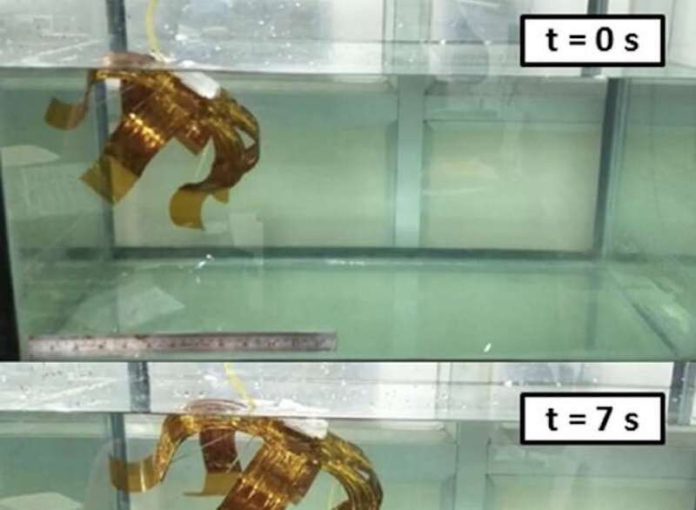
Researchers from the Indian Institute of Technology in Indore and Jodhpur have created a new bio-inspired robot modeled after a jellyfish, which could help monitor marine life and other underwater tasks.
The research, featured in the International Journal of Intelligent Robots and Applications, presents a breakthrough in underwater robotics.
Mimicking Nature’s Design
In a novel approach, the team used shape memory alloy (SMA) to actuate a flexible robot structure, successfully mimicking the pulsing and recovery movements of a jellyfish.
SMAs have a unique ability to return to their original shape upon heating, following deformation. The team utilized nitinol, an SMA widely used in electronic components and devices.
Efficient Construction Method
The fabrication process was highlighted as efficient, cost-effective, and significantly less time-consuming than conventional mold-based methods.
To create the robot, the researchers cut sheets of Kapton polyamide into a symmetric structure resembling a jellyfish’s body and punched holes at specific points to insert the SMA wires.
Promising Performance
Weighing just 45 grams, the jellyfish robot is soft, flexible, and crafted from readily available, affordable materials.
Its performance in initial tests was promising, managing to swim horizontally at a speed of 10 mm/s and vertically at 0.2 mm/s.
The team performed a thorough investigation of the robot’s behavior with varying SMA wire diameters and frequencies, and measured the tentacle displacement and velocity during mimicking.
Potential Future Applications
The researchers believe their jellyfish robot has considerable potential for future underwater applications.
They’ve developed an initial prototype with an onboard camera module and sonar sensor for object detection, contained within a watertight structure.
This new robot could be further improved and tailored to specific tasks, paving the way for efficient real-world solutions in navigating and monitoring underwater environments.
The study was published in the International Journal of Intelligent Robotics and Applications.
Follow us on Twitter for more articles about this topic.
Copyright © 2023 Knowridge Science Report. All rights reserved.



